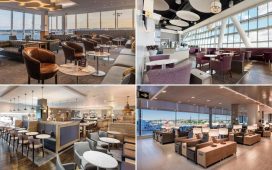I go to the mountains to breathe. To look out over huge vistas. To put my body in a different environment. To have fun with friends. To get cold, tired and hungry. To wax lyrical about tea and hot showers. To see the world anew.
The mountains of the UK and Ireland offer unique environments for adventure, exploration and nature connection. Over the years, I have had many amazing experiences in the remote wilds, but there are risks: paths are rarely signposted and weather can change quickly. Go out without the right skills, knowledge or equipment and things can soon turn deadly serious.

Heather Morning, mountain safety adviser for Mountaineering Scotland, says: “A quick look at the accident reports from Scottish Mountain Rescue highlights a very modern issue – people’s inability to navigate well, and an over-reliance on modern technology. Traditional navigation skills using a map and compass are still essential for safe travel in the mountains.”
In November, regarded as the end of the “summer season”, I did the mountain leader course that gave me the skills and knowledge needed to keep myself and others safe. Taught over six days, it covers navigation, group management, access and the environment, hazards (including steep ground and rivers), emergency procedures, equipment, expedition skills, weather and background mountain knowledge. Once you have completed it, honed your skills and gained the required experience, you can go on to do an assessment to qualify as a mountain leader.

Mountain leader training is for adults who have at least a year’s worth of mountain walking experience and an interest in leading groups. A basic level of fitness is essential: you must be able to manage six days’ walking in mountainous terrain, with one overnight expedition carrying camping packs.
My course was led by two highly experienced mountaineering instructors, Richard Bentley and Jon MacRobert. Under their eagle eyes, I headed out into the mountains around Fort William with four other trainees: a schoolteacher, an outdoors instructor and two locals.
The snowline was at around 700 metres. Richard and Jon planned routes carefully so that we stayed within remit (ice axe and crampons are not allowed on summer mountain leader courses). While Ben Nevis and the highest summits of Glen Coe were out, we found plenty of interesting peaks and knolls on which to practise all the skills required of a mountain leader.

Over the week, my navigation sharpened through focused map work, using compass, pacing and timings. I learned to read contours through my feet; to estimate distance by feeling my pace; to match lumps and bumps on the ground to orange squiggles on Ordnance Survey maps. We plotted routes using storytelling techniques, examining maps and creating sequential lists of features to run through like an Indigenous Australian songline. We moved on steep ground in Glen Coe, learning to keep each other safe on scree and boulder fields, and practised river crossings in Glen Nevis, wading through icy water that seemed to get colder each time I crossed.
We finally crossed together in triangle formation and with each icy step, my feet screamed. Earlier in the week, Jon had asked us, “How do you cross a river?” We offered various answers. They were all wrong. He was looking for the simplest: “A bridge.”
One day, we watched the sunset from a summit. A golden eagle glided past. The light faded and a deer herd ran across the breast of the hill, antlers silhouetted against evening sky. Darkness came fast. We dug out headtorches for a three-hour stint of night navigation, stumbling over grass hummocks and tripping through frozen bog as we made our way down to wild camp.
This was our overnight expedition. We needed to find somewhere sheltered from the north wind, where the ground was soft enough to take tent pegs and the burns were not frozen. We headed for an old shieling (hut) in a glen and found running water and space for four tents.

Waking in the night, I gazed up at the Milky Way and watched a shooting star plunge down to the horizon.
I would recommend mountain leader training to anyone who wants to build their skills and confidence in the mountains. Fears that I would feel out of place – a woman in a macho world of hardcore mountain men – were unfounded. The course is not about “beasting it”, but a week of supportive tuition in the mountains. Richard and Jon created a welcoming atmosphere, helping us to hone a huge range of skills without judgment or criticism.
Throughout our trips into the hills, the instructors paused to point out plants, birds and animals. I discovered that there are three main species of heather in Scotland (common, bell, and bross-leaved Heath) and, by the end of the week, I knew how to identify each one.
I left exhausted but inspired, brimming with enthusiasm to put my new skills to use.
Essential equipment for the course
Rucksack (30-40 litres, and possibly a larger one for the expedition)
Good walking boots
Waterproof jacket and trousers
Good thermal layers
Thermos flask for hot drinks
Packed lunches each day
Compass (preferably a Silva type 4 or similar)
Mapcase
Headtorch
Hat and two or three pairs of gloves
Tent
Stove, pots and pans
Sleeping mat
Sleeping bag
• Book mountain leader training courses through Mountain Training; they are available from National Training Centres (like Plas y Brenin in Wales and Glenmore Lodge in Scotland) from £300-£450, accommodation not included. Or you can book a private instructor; Anna trained with Richard Bentley (£330)
Looking for a holiday with a difference? Browse Guardian Holidays to see a range of fantastic trips













